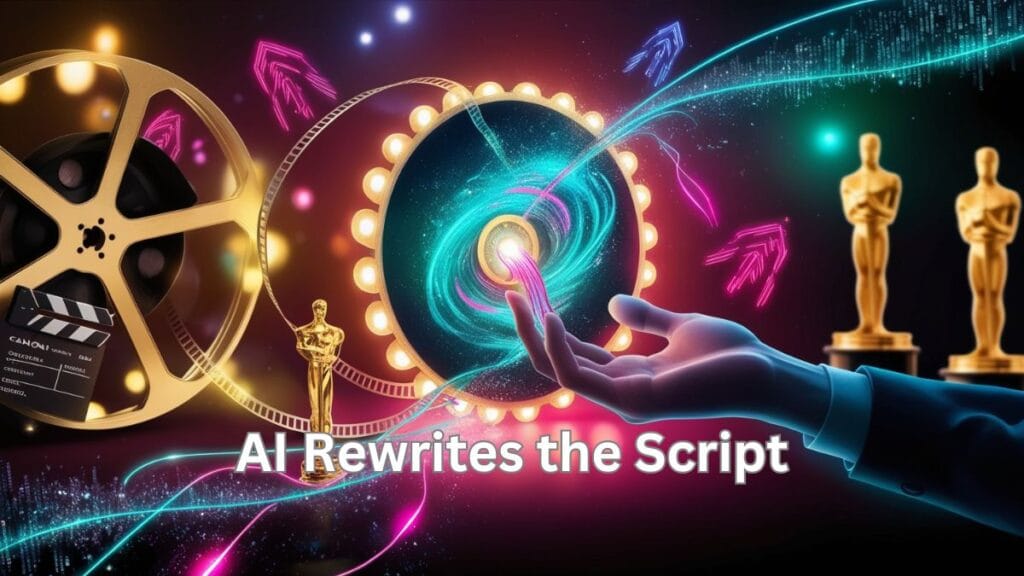Hollywood is in a state of panic. The rise of generative AI tools like OpenAI’s Sora, Google’s Veo 2, and AI-driven storytelling platforms has ignited existential dread across the entertainment industry. Writers, actors, and directors fear job displacement, creative homogenization, and AI replicas erasing human artistry. But while Hollywood obsesses over AI’s threat to existing workflows, it’s missing a seismic shift: AI isn’t just a tool—it’s an entirely new storytelling medium. Ignoring this reality could render the industry obsolete.
A Losing Fight Over Production Methods
Today’s debates revolve around AI’s ability to mimic human creativity. Unions like the Writers Guild and SAG-AFTRA fight for safeguards against AI replacements, while studios explore AI to slash costs and speed up production. But framing AI as a mere efficiency hack—or a job-stealing villain—misses the bigger picture.
Generative AI isn’t here to polish scripts or generate background CGI. It’s a paradigm shift in narrative itself. Imagine stories where characters evolve based on viewer input, or plots that branch infinitely to reflect individual preferences. This isn’t science fiction; it’s the reality of tools like Sora, which turns text into video, and Suno, which composes bespoke soundtracks. By fixating on preserving outdated workflows, Hollywood risks becoming the next Blockbuster—a relic clinging to a dying model while disruptors rewrite the rules.
From Broad Audiences to Custom Stories
Media evolution has followed a clear trajectory:
- Stage & Cinema (One story for all): The communal magic of packed theaters.
- Network TV (A few channels): Families gathered around shared broadcasts.
- Cable & Streaming (Millions of choices): Audiences fragmented into niches.
- AI-Driven Atomization (One story per viewer): Every experience is unique.
AI doesn’t just fragment audiences—it atomizes them. Generative storytelling enables narratives tailored to individual viewers in real time. Want a rom-com where the protagonist shares your hobbies, or a thriller set in your hometown? AI can do that. While Hollywood relies on mass appeal (a million viewers watching one show), AI flips the script: a million viewers could experience a million variations of the same story.
This isn’t about replacing movies but redefining storytelling itself. The communal experience of Barbenheimer or Game of Thrones won’t vanish overnight, but AI offers something radically new: stories that adapt, respond, and grow with the audience. Hollywood’s mistake? Assuming audiences will always prefer passive consumption over interactive, personalized journeys.
AI’s Role in Shaping a New Creative Era
History repeats itself. Early radio broadcasts regurgitated vaudeville acts. TV’s first shows were radio hosts reading scripts on camera. Streaming began as repackaged TV clips. Each medium needed time to find its voice. Generative AI is at that same inflection point.
Instead of resisting, Hollywood should ask: What can AI create that’s impossible with traditional methods?
- Dynamic Characters: AI agents that learn from viewer interactions, creating unscripted dialogue and plot twists.
- Infinite Worlds: Stories that expand beyond a writer’s imagination, with settings and lore generated on demand.
- Real-Time Adaptation: A horror film that adjusts its pacing based on your heart rate, or a comedy that references your social media posts.
Yet studios remain trapped in a legacy mindset. They see AI as a cost-cutting tool for pre-visualization or dubbing, not a canvas for reinvention. Meanwhile, Silicon Valley and indie creators are already experimenting. Platforms like Civitai (AI-generated art) and Inworld (AI character engines) hint at the future: a democratized creative landscape where anyone can craft immersive narratives without a Hollywood budget.
The Tech Behind the Change
The AI revolution isn’t looming—it’s here. Below are the tools redefining storytelling:
- Text-to-Video: OpenAI’s Sora, Runway’s Gen-3 Alpha, and Google’s Veo 2 transform prompts into high-quality video clips.
- AI Voices: Tools like ElevenLabs clone voices or generate synthetic ones indistinguishable from humans.
- Concept Art & Animation: Midjourney and DALL·E 3 create stunning visuals; Pika Labs animates them in seconds.
- AI Composers: Suno and Udio craft original music scores tailored to specific moods or scenes.
These tools aren’t just assistants—they collapse production timelines and democratize access. A solo creator can now produce a pilot episode that rivals studio quality. But Hollywood’s response? Lawsuits over IP rights and lobbying for strict AI regulations. Instead of gatekeeping, studios should partner with tech innovators to co-create the future.
Where AI-Driven Narratives Are Headed
Hollywood’s existential crisis isn’t about losing jobs; it’s about losing relevance. The next generation of audiences won’t settle for static stories. They’ll demand narratives that engage them uniquely—whether through interactive endings, personalized characters, or AR/VR hybrids powered by AI.
Consider the gaming industry: Titles like Baldur’s Gate 3 thrive by offering players agency. AI can take this further, turning passive viewers into co-creators. Imagine a Star Wars spin-off where your choices shape the galaxy’s fate, or a Harry Potter series where AI generates new magical subplots daily.
Hollywood’s Last Chance to Adapt
Technology rarely destroys industries—it transforms them. Horse-drawn carriages became cars. Print media digitized. Hollywood survived the VHS, DVD, and streaming revolutions by adapting (grudgingly). Now, it faces its biggest test.
The choice is stark:
- Double down on legacy models, treating AI as a threat to be regulated into obsolescence.
- Embrace AI as a medium, investing in experimental formats that merge human creativity with machine scalability.
The clock is ticking. If Hollywood clings to the past, a new wave of creators—unburdened by tradition—will build the future without it. The question isn’t whether AI will reshape storytelling, but who will control the narrative.
AI isn’t killing Hollywood—it’s offering a lifeline. By reimagining storytelling as dynamic, personalized, and infinite, the industry could unlock unprecedented creative and economic potential. But first, it must stop fearing the tool… and start mastering the medium.

